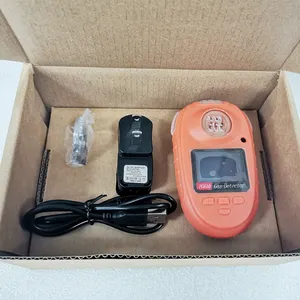Introduction to LEL Detector
A LEL Detector, or Lower Explosive Limit Detector, plays a pivotal role in industrial safety by identifying and measuring flammable gas concentrations. Essential for workplaces that handle volatile substances, these detectors ensure that the risk of explosions is minimized. By continuously monitoring the air quality, an LEL Detector helps maintain a safe working environment, alerting personnel to dangerous gas levels before they reach a point of ignition.
Types of LEL Detectors
LEL Detectors are available in various types, each designed for specific operational needs and environments. The main categories include:
- Catalytic Bead Detectors: Use a pair of beads, one active and one inactive, to measure flammable gas concentrations based on temperature changes.
- Infrared Sensors: Employ infrared light to detect the presence of hydrocarbon gases, offering advantages in terms of stability and longer life.
- Electrochemical Sensors: Utilize chemical reactions to measure gas levels; ideal for certain types of toxic gas detection.
- Metal Oxide Semiconductors: Detect gas through changes in electrical resistance, providing a fast response time and versatility.
Applications of LEL Detectors
LEL Detectors find widespread application across numerous industries where flammable gases and vapors pose significant hazards. Key applications include:
- Oil and Gas: Essential for monitoring drilling sites, refineries, and storage facilities to prevent explosive incidents.
- Chemical Manufacturing: Used in processes involving volatile chemicals, ensuring that gas levels remain within safe limits.
- Wastewater Treatment: Helps in managing gases released during treatment processes, particularly in anaerobic digestion facilities.
- Mining: Vital for detecting methane and other flammable gases in underground operations to prevent incidents.
Features and Advantages of LEL Detectors
LEL Detectors come equipped with numerous features that enhance safety, usability, and functionality in various environments. Some notable features and advantages include:
- Real-Time Monitoring: Provides continuous updates on gas concentrations, allowing for immediate action if levels rise dangerously.
- Alarm Systems: Equipped with audible and visual alarms to alert personnel of hazardous gas levels, ensuring quick evacuations if necessary.
- Portable Options: Many LEL Detectors are designed for portability, allowing workers to carry them into potentially dangerous areas without hassle.
- Durable Construction: Built to withstand harsh industrial environments, these detectors typically feature water and dust resistance.
- Calibration and Sensitivity Settings: Easy adjustments for calibration to different gases, ensuring accurate readings tailored to specific operational requirements.











































































































































































